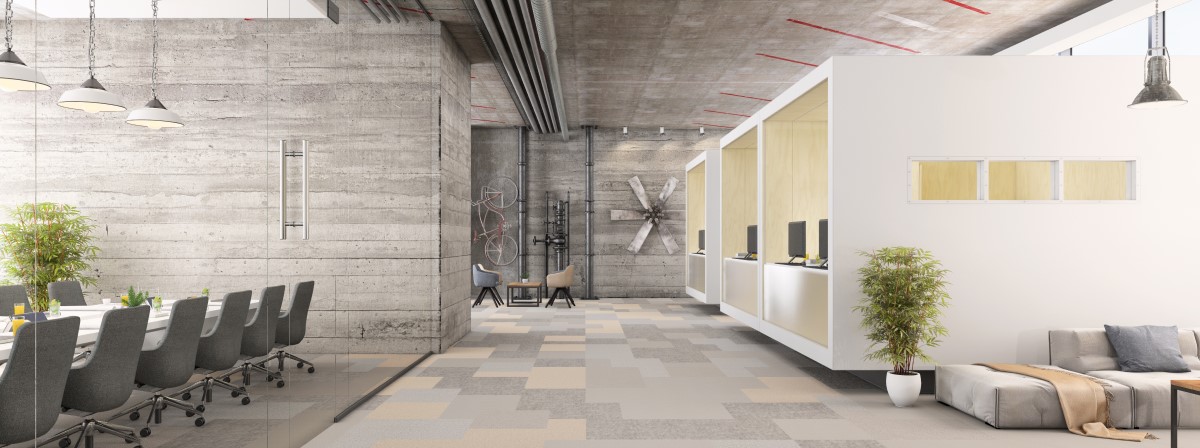PODCAST: How COVID-19 is changing the office as we knew it
Companies are rethinking space requirements, but not the need for the office
The COVID-19 pandemic has been forcing corporate leadership to re-examine their real estate strategies, with many reconsidering the amount of space dedicated to the traditional office.
Corporate giants such as Twitter, Morgan Stanley, and Barclays have all publicly questioned their future real estate requirements and the amount of space they dedicate to traditional office space.
In May, both Twitter and Facebook announced that they will allow some of their staff to work from remotely “indefinitely”, with Facebook CEO Mark Zuckerberg claiming that half of the company’s staff will be working from home in the next 10 years.
As companies around the world battle with an economic downturn due to the pandemic, many are set to follow suit and re-examine requirements as leases expire.
“As the current situation poses disruption and challenges for the office sector, the way people view and use corporate real estate will certainly change,” says Anthony Couse, CEO, JLL Asia Pacific. “However, this won’t spell the end of the office. Ultimately, it is people who are the end-users of real estate. We think offices will remain central to their daily business life.”
The widespread use of the corporate office has faced previous existential threats, most recently through the rise of the internet, and the economic downturn during the Global Financial Crisis.
But the scale of the COVID-19 pandemic and the subsequent adoption of unilateral work-from-home programs has reignited a global conversation about the practicality, financials, and fit-outs of traditional office space. Especially given that remote working has shown it can supplement office-based working when required, debate has grown around whether the office sector will enter an irreversible decline.
The office, but not as we know it?
Change, to some extent, is inevitable, and indeed welcomed, says Roddy Allan, Chief Research Officer, Asia Pacific, JLL. “But is this Asia Pacific real estate’s Uber moment? No. We believe that this impact and change is overestimated in the medium-to-long term,” he says.
While corporate occupiers are likely to re-examine business models, post-COVID-19 these conversations will initially center on balancing business goals with the health and wellbeing of staff.
Looking for more insights? Never miss an update.
The latest news, insights and opportunities from global commercial real estate markets straight to your inbox.
A short-term solution could see companies leveraging work from home offerings as part of a hybrid model with more third-party flexible space.
“As employers start to realize that many roles and functions can be performed effectively and efficiently from home, it is possible that remote working is built into the role from the outset,” says Allan. “On the other hand, people are starting to miss the office – the human interaction and collaboration at the office, even the commute to the office. Do these preferences point us to a different type of office? Potentially we could be looking at a hybrid model supporting two kinds of employee teams – one is working at offices and working remotely.”
While some change may result from high-level corporate discussions, re-entry strategies will likely position the office at the heart of employers’ occupational strategy.
As the first region to be hit, and the first to show signs of recovery, Asia Pacific is starting to see more corporates re-enter the office. In China and Hong Kong, re-entry has been phased but the most immediate change has been the structure of space to align with social distancing regulations.
In some cases, this may eventually lead to an expansion of office space, to support physical distancing among their employees and comply with more stringent regulatory regimes around social interaction.
Evolution of design
The continued redesign of space with a focus on efficiency will likely gain steam as a result of COVID-19, says Couse.
“The office, as we know it, will evolve. We have seen clients increasingly focused on sustainability, wellness, and technology. Some have begun making environmental tweaks and upgrades to align with commitments of building trust and ensuring fit-for-purpose spaces. Owners and investors who can take advantage of this opportunity to think about long-term redevelopment plans and designing or re-fitting their facilities will benefit greatly.”
As offices re-open and assembly and mobility restrictions are eased, some roles in corporations will stay remote even after re-entry moves to a more mature phase. This phased entry and the option for more remote work will potentially help corporations adjust workspaces for social distancing and health requirements in the short-term.
In the long run, this could mean office space and location requirements may change. However, a factor that is also being considering by corporations when making decisions is the professional environment that offices provide, which are leading to more conversations on repurposing or redesigning work areas to provide infrastructure for collaboration among remote and on-site staff.
Even with remote working now an established option in the work environment, there remains a strong case for the office’s long-term future.
Contact Anthony Couse
CEO, JLL Asia PacificWhat’s your investment ambition?
Uncover opportunities and capital sources all over the world and discover how we can help you achieve your investment goals.
 SPOTIFY
SPOTIFY APPLE
APPLE GOOGLE PODCASTS
GOOGLE PODCASTS